What if we connect two different voltage sources in parallel in ideal condition?
From the question here that is assuming internal resistors, Different voltage sources in parallel, I thought I can analyze ideal circuit if internal resistors all goes zero ohm.
$${V_{out}=V_1\cdot{R_{i1}\over R_{i1}+R_{i2}}+V_2\cdot {R_{i2}\over R_{i1}+R_{i2}}}$$
but wolframalpha says limit does not exist
Is there any way to analyze this circuit? And if we can't, how do we know what would happen if we connect two ideal different voltage sources?
